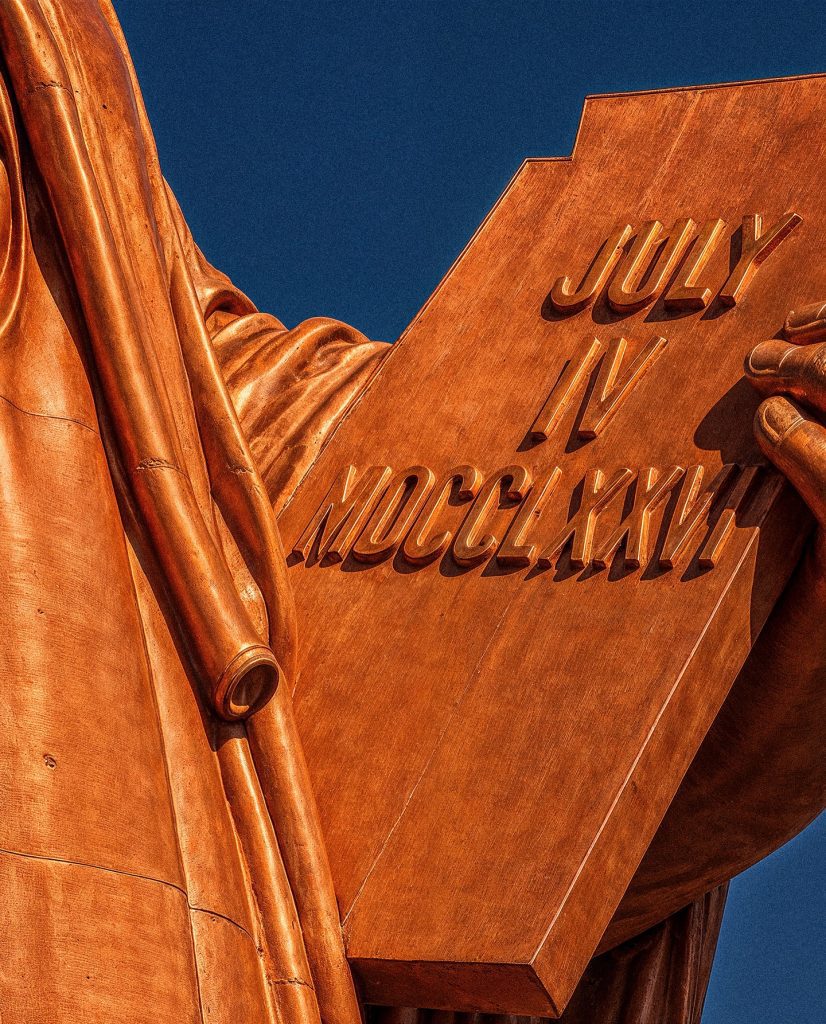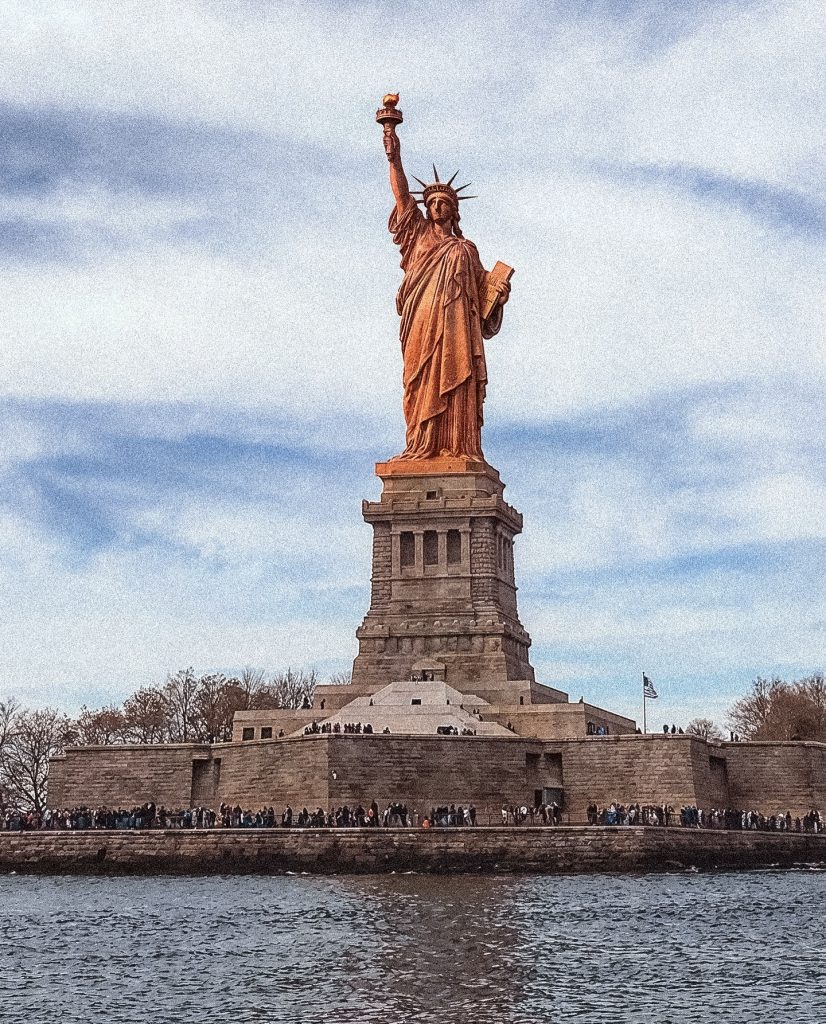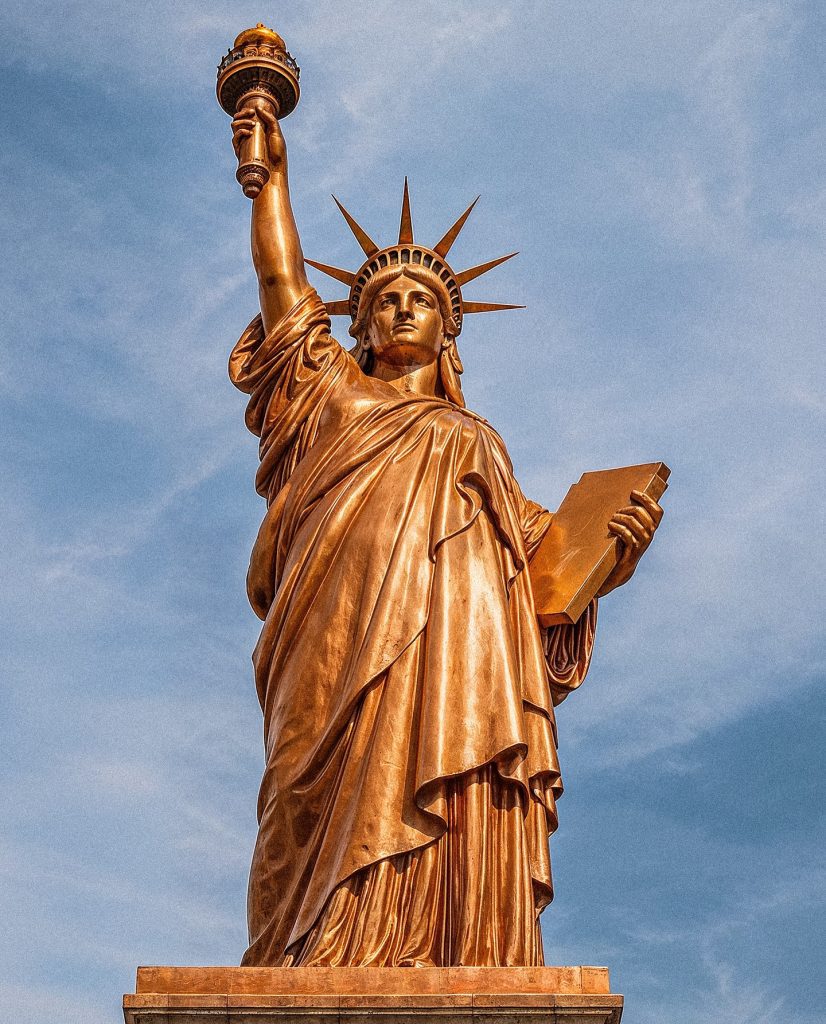How the Statue of Liberty Might’ve Looked When It Was Delivered
When we think of the Statue of Liberty, most of us picture that iconic seafoam-green giant rising from New York Harbor. But what if I told you that wasn’t always the case? What if, instead of the familiar green, Lady Liberty once stood tall with a bright copper glow — like a brand-new penny reflecting the morning sun? This isn’t a fun visual trick or a modern repainting; it’s a real part of her history that many people have simply never heard about.
It’s one of those historical facts that completely reshapes how you look at a monument. We all grow up seeing this green statue, on stamps and souvenirs, in movies and travel guides, as if it was always that way. But hidden behind that green layer is a story of time, transformation, and even chemistry — a tale that connects art, science, and symbolism in the most unexpected way. And honestly, once you learn it, you’ll never see her the same way again.
The Forgotten Copper Lady
When the Statue of Liberty was completed and shipped from France in 1885, it arrived as a shimmering copper sculpture. Its entire outer layer was made of pure copper sheets — about 3/32 of an inch thick — the same metal you’d see on a new one-cent coin. This wasn’t a design accident or a temporary state; it was intentional. Sculptor Frédéric Auguste Bartholdi envisioned Lady Liberty in radiant copper, and when she was finally assembled on her pedestal in 1886, she glowed like fire under the sun. For the early visitors sailing into New York, this was the first breathtaking sight — a colossal copper figure rising from the sea, torch in hand, welcoming travelers with warmth and brilliance.

But time has a way of changing even the most iconic things. Within a couple of decades, Lady Liberty began to change color. At first, there were patches of dull brown. Then, slowly, streaks of green started appearing. By the 1920s, she was entirely coated in that now-famous oxidized hue — a natural transformation that many misunderstood at the time.
What caused this color change wasn’t paint, pollution, or any sort of damage. It was simply nature doing what it does best. Copper, when exposed to air and moisture, undergoes oxidation. First, it turns a dull brown as copper oxide forms. Then, as it interacts with carbon dioxide, sulfur dioxide, and water from the sea air, it slowly forms a green patina made of copper carbonate. This entire process took around 20 years. By 1906, the transformation was in full swing, and by 1920, the green was permanent.

Interestingly, this green layer wasn’t considered a problem. In fact, engineers quickly realized that the patina actually protected the underlying copper from further corrosion — acting like a natural shield. There were some public debates at the time about whether the statue should be cleaned or “restored” to its copper shine, but thankfully, those ideas were abandoned. The green Lady Liberty became the norm — the one we now know, love, and associate with freedom.
Think about how powerful that is. Something that changed over time, not through damage or decay, but through natural evolution, ended up becoming even more beloved than its original form. It’s a quiet metaphor for so many things in life — how change doesn’t always take away beauty, but sometimes reveals a new kind.

A Living Monument, Always Changing
There’s something magical about realizing that the Statue of Liberty is, in a way, alive. Not in the literal sense, of course, but in how she’s changed and adapted. Her green color isn’t frozen in time like a painted sculpture. It’s the result of decades of weather, salt air, pollution, storms, and sunshine — all those elements working together to reshape her surface without breaking her strength.
She’s not the same statue people saw in 1886. And yet, she’s still the same symbol. Maybe even more so.
In fact, the changing color of the statue mirrors the evolving idea of liberty itself. When she first arrived, the U.S. was welcoming immigrants through Ellis Island. The copper shine was a beacon of hope. Over time, that hope was tested through wars, economic struggles, civil rights battles, and global changes. The statue changed — and so did the country. But both stood tall. That green skin became a visual symbol of resilience. Of endurance. Of something that’s been through time and still stands.

Even today, visitors from around the world stand in awe of her. Most of them don’t know she was ever copper, and that’s okay. Because even in her weathered, sea-green state, she’s breathtaking. She’s more than a statue. She’s a witness to history. A silent storyteller. And just like any true symbol, her power lies not just in how she looks — but in everything she’s lived through.

Sometimes I wonder if we, as people, could learn something from Lady Liberty. Maybe we don’t need to stay shiny and perfect all our lives. Maybe the wear and tear, the exposure to elements, the changes that come over time — maybe all of that just adds more character. More depth. More reason to stand proud.
So the next time you look at the Statue of Liberty — whether in person or in a photo — just remember: underneath that green skin is the heart of copper. The same copper that once gleamed like fire. And no matter how much time passes, she’s still holding that torch high.


